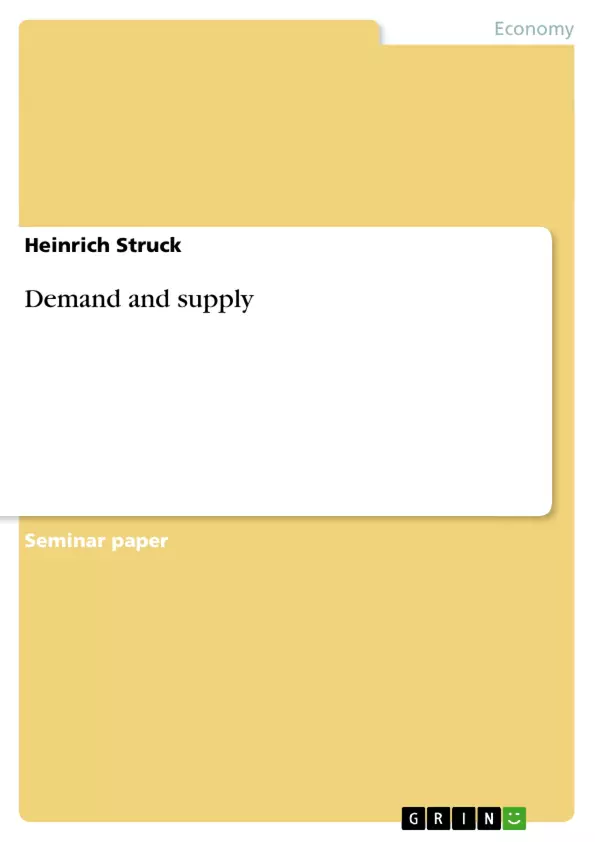When people’s actions are based on self-interest, people respond to incentives, that is, to costs and benefits. When the costs of an activity are raised or the benefits reduced, people do less of the activity. Economists have found that they can use this simple idea of action based on costs and benefits to constructs model that explains how many markets work. This model, the model of demand and supply, is perhaps the most basic of the models economists use to explain the world around us. In a competitive market price will function to equalize the quantity demanded by consumers, and the quantity supplied by producers.
Inhaltsverzeichnis (Table of Contents)
- Introduction
- Demand schedule
- The supply schedule
- Equilibrium
- Elasticity
- Shortages and Surpluses
- History
- References
Zielsetzung und Themenschwerpunkte (Objectives and Key Themes)
This text aims to explain the fundamental economic principles of demand and supply, using a simple model to illustrate how markets function. The text explores the relationship between price and quantity in both demand and supply, and how these forces interact to determine market equilibrium.
- The law of demand and its implications
- The relationship between price and quantity supplied
- Market equilibrium and its determination
- The concept of elasticity in demand and supply
- The impact of shortages and surpluses on markets
Zusammenfassung der Kapitel (Chapter Summaries)
The text begins by introducing the concept of demand, explaining how it is influenced by price. The demand schedule and demand curve are presented, illustrating the inverse relationship between price and quantity demanded. The text then moves on to the supply schedule and supply curve, highlighting the positive relationship between price and quantity supplied. The text explores how these two forces interact to determine market equilibrium, a point where the quantity demanded and quantity supplied are equal. The text also examines the concept of elasticity, analyzing the responsiveness of demand and supply to changes in price. Finally, the text discusses the implications of shortages and surpluses in the market, explaining how they arise and their impact on price and quantity.
Schlüsselwörter (Keywords)
This text focuses on the fundamental economic principles of demand, supply, market equilibrium, elasticity, and shortages and surpluses. The text uses the model of demand and supply to explain how prices and quantities are determined in a market setting. Key concepts explored include the law of demand, the supply curve, price elasticity, and the impact of market imbalances.
- Citation du texte
- Heinrich Struck (Auteur), 2008, Demand and supply, Munich, GRIN Verlag, https://www.grin.com/document/118556



